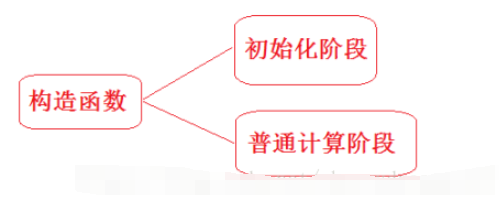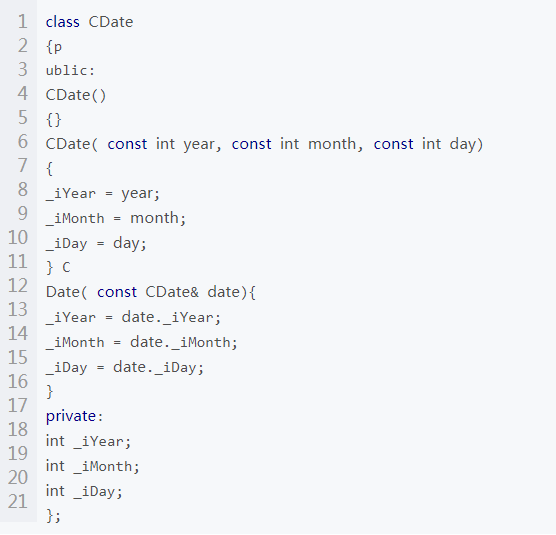今天我们来聊一聊以数组为数据结构的阻塞队列 ArrayBlockingQueue,它实现了 BlockingQueue 接口,继承了抽象类 AbstractQueue。
BlockingQueue 提供了三个元素入队的方法。
boolean add(E e);
boolean offer(E e);
void put(E e) throws InterruptedException;
三个元素出队的方法。
E take() throws InterruptedException;
E poll(long timeout, TimeUnit unit)
throws InterruptedException;
boolean remove(Object o);
一起来看看,ArrayBlockingQueue 是如何实现的吧。
初识
首先看一下 ArrayBlockingQueue 的主要属性和构造函数。
属性
//存放元素
final Object[] items;
//取元素的索引
int takeIndex;
//存元素的索引
int putIndex;
//元素的数量
int count;
//控制并发的锁
final ReentrantLock lock;
//非空条件信号量
private final Condition notEmpty;
//非满条件信号量
private final Condition notFull;
transient Itrs itrs = null;
从以上属性可以看出:
- 以数组的方式存放元素。
- 用 putIndex 和 takeIndex 控制元素入队和出队的索引。
- 用重入锁控制并发、保证线程的安全。
构造函数
ArrayBlockingQueue 有三个构造函数,其中 public ArrayBlockingQueue(int capacity, boolean fair, Collection c) 构造函数并不常用,暂且不提。看其中两个构造函数。
public ArrayBlockingQueue(int capacity) {
this(capacity, false);
}
public ArrayBlockingQueue(int capacity, boolean fair) {
if (capacity <= 0)
throw new IllegalArgumentException();
//构造数组
this.items = new Object[capacity];
//默认以非公平锁初始化 ReentrantLock
lock = new ReentrantLock(fair);
//创建两个条件信号量
notEmpty = lock.newCondition();
notFull = lock.newCondition();
}
可以看出 ArrayBlockingQueue 必须再创建时传入数组的大小。
元素入队
ArrayBlockingQueue 有 add()、offer()、put()、offer(E e, long timeout, TimeUnit unit) 方法用来元素的入队。
add
//ArrayBlockingQueue.add()
public boolean add(E e) {
//调用父类的 AbstractQueue.add() 方法
return super.add(e);
}
//AbstractQueue.add()
public boolean add(E e) {
//调用 ArrayBlockingQueue.offer(),成功则返回 true,否则抛出异常
if (offer(e))
return true;
else
throw new IllegalStateException("Queue full");
}
//ArrayBlockingQueue.offer()
public boolean offer(E e) {
//非空检查
checkNotNull(e);
//加锁
final ReentrantLock lock = this.lock;
lock.lock();
try {
//数组满了,返回 false
if (count == items.length)
return false;
else {
//添加元素
enqueue(e);
return true;
}
} finally {
//解锁
lock.unlock();
}
}
//ArrayBlockingQueue.enqueue()
private void enqueue(E x) {
final Object[] items = this.items;
//直接放到 putIndex 的位置
items[putIndex] = x;
//如果索引满了,putIndex 就从 0 开始,为什么呢?
if (++putIndex == items.length)
putIndex = 0;
//数量加一
count++;
//数组里面有数据了,对 notEmpty 条件队列进行通知
notEmpty.signal();
}
上面留下了一个坑,索引等于数组的长度的时候,索引就从 0 开始了。其实很简单,这个数组是不是先入先出的,0 索引的数组先入队,也是先出队的。这时候 0 索引的位置就空了,所以 putIndex 到达数组长度的时候就可以从 0 开始。这里可以看出,ArrayBlockingQueue 是绝对不可以修改数组长度的,一旦初始化后长度就不能再改变了。
put
//ArrayBlockingQueue.put()
public void put(E e) throws InterruptedException {
//非空检查
checkNotNull(e);
final ReentrantLock lock = this.lock;
//加锁
lock.lockInterruptibly();
try {
//数组满了,线程加入 notFull 队列中等待被唤醒
while (count == items.length)
notFull.await();
//添加元素
enqueue(e);
} finally {
//解锁
lock.unlock();
}
}
offer
ArrayBlockingQueue 中有两个 offer() 方法,offer(E e) 和 offer(E e, long timeout, TimeUnit unit),add() 方法调用的就是 offer(E e) 方法。
//ArrayBlockingQueue.offer(E e, long timeout, TimeUnit unit)
public boolean offer(E e, long timeout, TimeUnit unit)
throws InterruptedException {
//非空检查
checkNotNull(e);
//将时间转换为纳秒
long nanos = unit.toNanos(timeout);
final ReentrantLock lock = this.lock;
//加锁
lock.lockInterruptibly();
try {
//当数组满了
while (count == items.length) {
//时间到了,元素还没有入队,则返回 false
if (nanos <= 0)
return false;
//线程加入 notFull 队列中,等待被唤醒,到达 nanos 时间返回剩余的 nanos 时间
nanos = notFull.awaitNanos(nanos);
}
//元素入队
enqueue(e);
return true;
} finally {
//解锁
lock.unlock();
}
}
以上就是所有的元素入队的方法,可以得出一些结论:
- add() 元素满了,就抛出异常。
- offer() 元素满了,返回 false。
- put() 元素满了,线程阻塞等待被入队。
- offer(E e, long timeout, TimeUnit unit) 加入超时时间,如果时间到了元素还是没有被入队,则返回 false
移除元素
ArrayBlockingQueue 提供了 poll()、take()、poll(long timeout, TimeUnit unit)、remove() 方法用于元素的出队。
poll
ArrayBlockingQueue 中有两个 poll() 方法,poll() 和 poll(long timeout, TimeUnit unit)。
//ArrayBlockingQueue.poll()
public E poll() {
final ReentrantLock lock = this.lock;
//加锁
lock.lock();
try {
//没有元素返回 null,否则元素出队
return (count == 0) ? null : dequeue();
} finally {
lock.unlock();
}
}
//ArrayBlockingQueue.dequeue()
private E dequeue() {
final Object[] items = this.items;
@SuppressWarnings("unchecked")
//获取 takeIndex 上的元素
E x = (E) items[takeIndex];
//设置 takeIndex 索引上的元素为 null
items[takeIndex] = null;
//当 takeIndex 长度是数组长度,takeIndex 索引从 0 开始
if (++takeIndex == items.length)
takeIndex = 0;
//元素数量 -1
count--;
if (itrs != null)
//更新迭代器
itrs.elementDequeued();
//唤醒 notFull 的等待队列,其中等待的第一个线程可以添加元素了
notFull.signal();
return x;
}
//ArrayBlockingQueue.poll(long timeout, TimeUnit unit)
public E poll(long timeout, TimeUnit unit) throws InterruptedException {
////将时间转换为纳秒
long nanos = unit.toNanos(timeout);
final ReentrantLock lock = this.lock;
//加锁
lock.lockInterruptibly();
try {
//数组为空,超时还没有元素出队,则返回 null
while (count == 0) {
if (nanos <= 0)
return null;
//线程加入 notEmpty 中,等待被唤醒,到达 nanos 时间返回剩余的 nanos 时间
nanos = notEmpty.awaitNanos(nanos);
}
//元素出队
return dequeue();
} finally {
lock.unlock();
}
}
take
//ArrayBlockingQueue.take()
public E take() throws InterruptedException {
final ReentrantLock lock = this.lock;
//加锁
lock.lockInterruptibly();
try {
//无元素
while (count == 0)
//将线程加入 notEmpty 的等待队列中,等待被入队的元素唤醒
notEmpty.await();
//元素出队
return dequeue();
} finally {
//解锁
lock.unlock();
}
}
remove
//ArrayBlockingQueue.remove()
public boolean remove(Object o) {
//非空检查
if (o == null) return false;
final Object[] items = this.items;
final ReentrantLock lock = this.lock;
//加锁
lock.lock();
try {
if (count > 0) {
//入队元素的索引
final int putIndex = this.putIndex;
//出队元素的索引
int i = takeIndex;
do {
//找到元素
if (o.equals(items[i])) {
removeAt(i);
return true;
}
//i 等于数组长度的时候,从 0 开始
if (++i == items.length)
i = 0;
// i == putIndex 说明已经遍历了一遍
} while (i != putIndex);
}
return false;
} finally {
//解锁
lock.unlock();
}
}
//ArrayBlockingQueue.removeAt()
void removeAt(final int removeIndex) {
final Object[] items = this.items;
//需要出队的 removeIndex 正好是 takeIndex
if (removeIndex == takeIndex) {
items[takeIndex] = null;
if (++takeIndex == items.length)
takeIndex = 0;
count--;
//更新迭代器
if (itrs != null)
itrs.elementDequeued();
} else {
final int putIndex = this.putIndex;
// 循环移动元素,将 next 元素向前移动 1 个
for (int i = removeIndex;;) {
int next = i + 1;
if (next == items.length)
next = 0;
if (next != putIndex) {
items[i] = items[next];
i = next;
} else {
//设置 i 索引的位置为空,putIndex 索引为 i
items[i] = null;
this.putIndex = i;
break;
}
}
count--;
if (itrs != null)
itrs.removedAt(removeIndex);
}
// 唤醒 notFull 队列中等待的线程,通知可以元素入队了
notFull.signal();
}
以上就是所有的元素出队的方法,可以得出一些结论:
- poll() 元素出队为空,则返回空
- take() 元素出队为空的时候,会阻塞线程
- remove() 元素出队的时候可能会移动数组
- poll(long timeout, TimeUnit unit) 加入超时时间,如果时间到了还是没有元素需要出队,则返回 null
总结
ArrayBlockingQueue 可以被用在生产者和消费者模型中。
- ArrayBlockingQueue,不能被扩容,初始化被指定容量。
- 利用 putIndex 和 takeIndex 循环利用数组。
- 利用了 ReentrantLock 和 两个 Condition 保证了线程的安全。
-
接口
+关注
关注
33文章
9444浏览量
156140 -
函数
+关注
关注
3文章
4406浏览量
66837 -
数据结构
+关注
关注
3文章
573浏览量
41367 -
数组
+关注
关注
1文章
420浏览量
27114
发布评论请先 登录
SystemVerilog中的类构造函数new
一个基于多属性协商的效用函数研究
基于生成函数的格雷对分析与构造
基于plateaued函数的平衡布尔函数构造
2.10 学生类-构造函数 (15分)






 BlockingQueue主要属性和构造函数
BlockingQueue主要属性和构造函数















评论